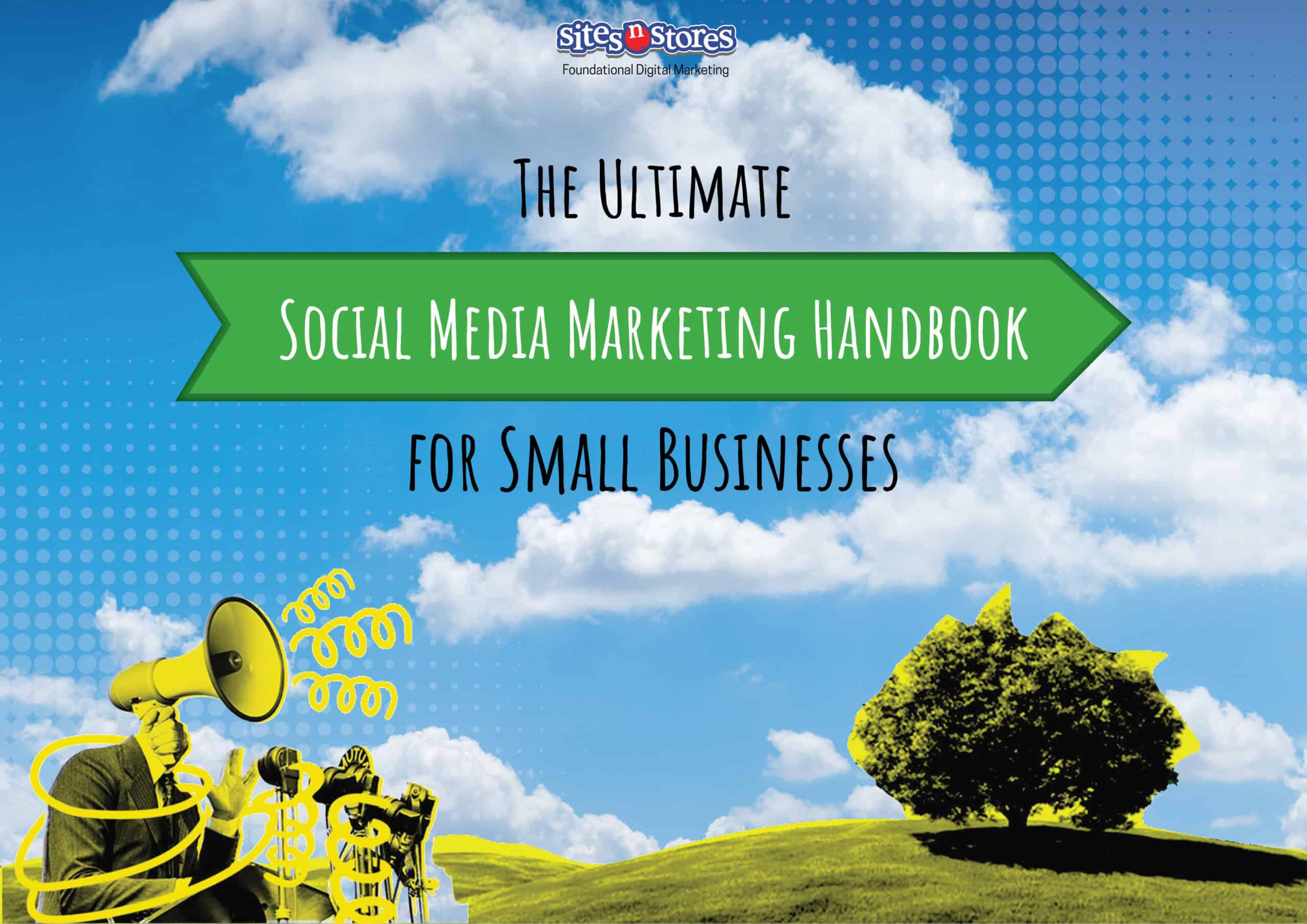Welcome to your one-stop resource for all things social media marketing tailored exclusively for the vibrant world of small businesses! Living in the digital age, your online presence can make a monumental difference in how your brand shines. We’re excited to share a suite of strategies, tips, and insights that will help you not only engage your audience but turn your social media platforms into powerful levers for growth and customer connection.
We know you're passionate about what you do, and you deserve a social media presence that reflects that. Whether you're just starting or you're ready to take your social media to the next level, our handbook is here, brimming with everything you need.
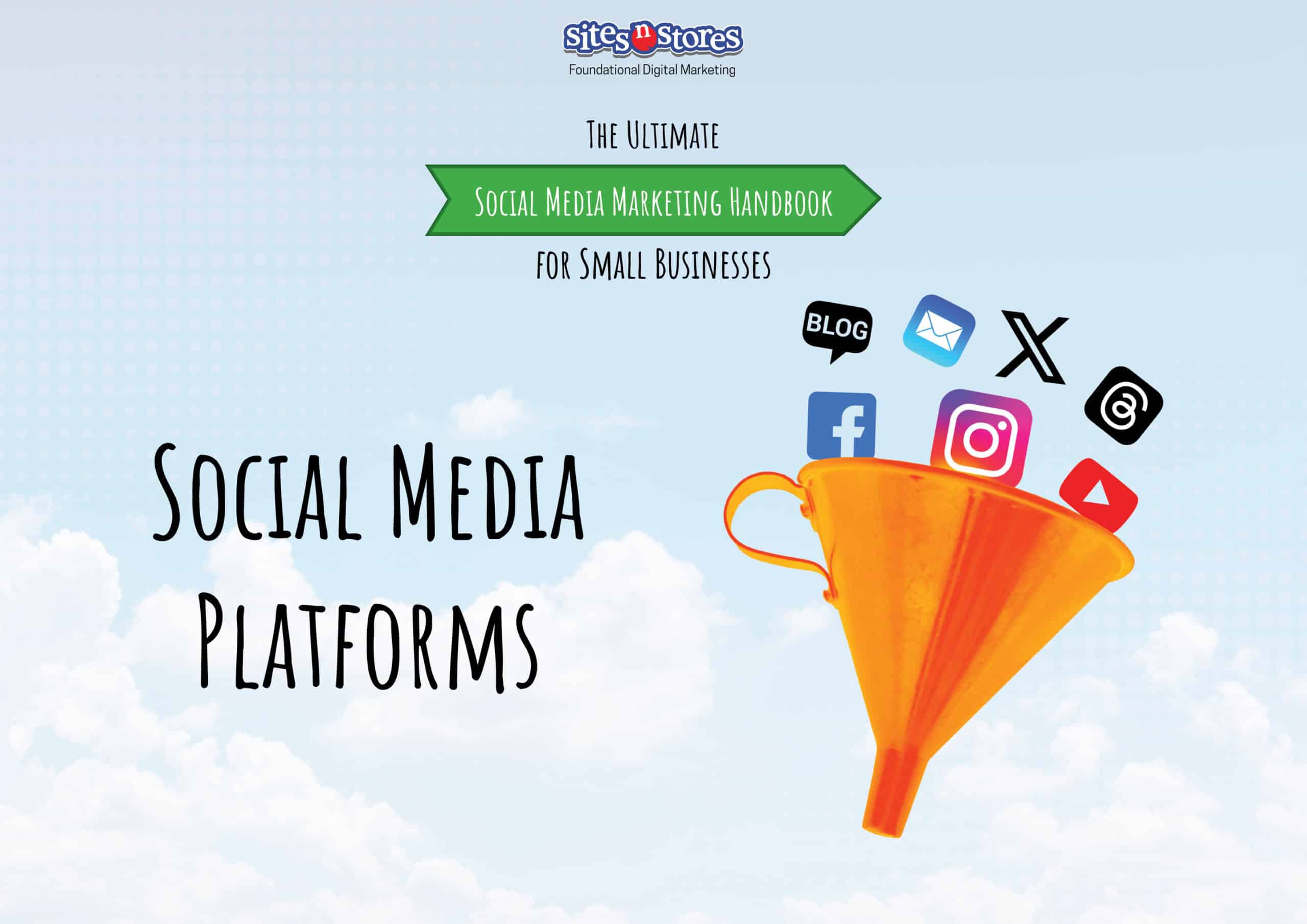
Social Media Platforms
Understanding the diverse range of social media platforms is crucial for unlocking access to various communities, each characterised by distinct atmospheres and specific audiences. Each social media platform comes with its own rules, culture, and inhabitants.
Facebook, with its vast user base, offers a broad spectrum of opportunities for businesses to engage with a wide demographic. It's a versatile platform where companies can share updates, create events, and run targeted advertising campaigns to reach their desired audience. The key to success on Facebook lies in understanding the algorithm and crafting content that encourages interaction and engagement.
Instagram, on the other hand, is a visually-driven platform that's perfect for brands with strong visual content. Here, success is achieved through high-quality photos and videos, engaging stories, and the strategic use of hashtags to reach niche communities. Instagram's features, such as IGTV and Instagram Live, offer additional channels for connecting with audiences in a more dynamic and interactive way.
X (formerly Twitter), an established platform, offers a unique proposition with its microblogging format. It's like a virtual town square where real-time conversations unfold. For businesses, X is an opportunity to establish thought leadership, network with professionals, and engage in quick, impactful conversations with audiences.
LinkedIn stands out as the premier professional networking platform, a goldmine for B2B marketers and businesses looking to establish authoritative industry presence. Here, the focus is on creating content that not only highlights your company's achievements and milestones but also shares valuable insights, trends, and professional advice that can benefit your target audience. Engaging on LinkedIn involves a strategic blend of publishing informative articles, participating in industry-specific conversations, and leveraging LinkedIn Ads to reach decision-makers and influencers within your industry. This platform is your ticket to building meaningful professional relationships, attracting top talent, and positioning your brand as a leader in its field.
TikTok, the newcomer that has taken the world by storm, thrives on short, engaging videos that often go viral. It's a platform where creativity, originality, and trend-savviness reign supreme. For businesses, TikTok represents a chance to tap into the younger demographics by creating content that's not only promotional but also entertaining and relatable.
Use the above explanations on these social media platforms to identify where your business fits best. Ensure you're using the correct strategies for thriving within each space, leveraging their unique features to grow your audience, engage with customers, and ultimately drive success. Through careful analysis and strategic engagement, you can effectively navigate the complex landscape of social media to build your business's presence and connect with your target audiences in meaningful ways.
Not every platform is going to work with every business, so you need to ensure you're choosing the right social media platform for your business. Selecting the right one means that you're making the right connection and networks that align with your goals (and overall leads to more conversions!).
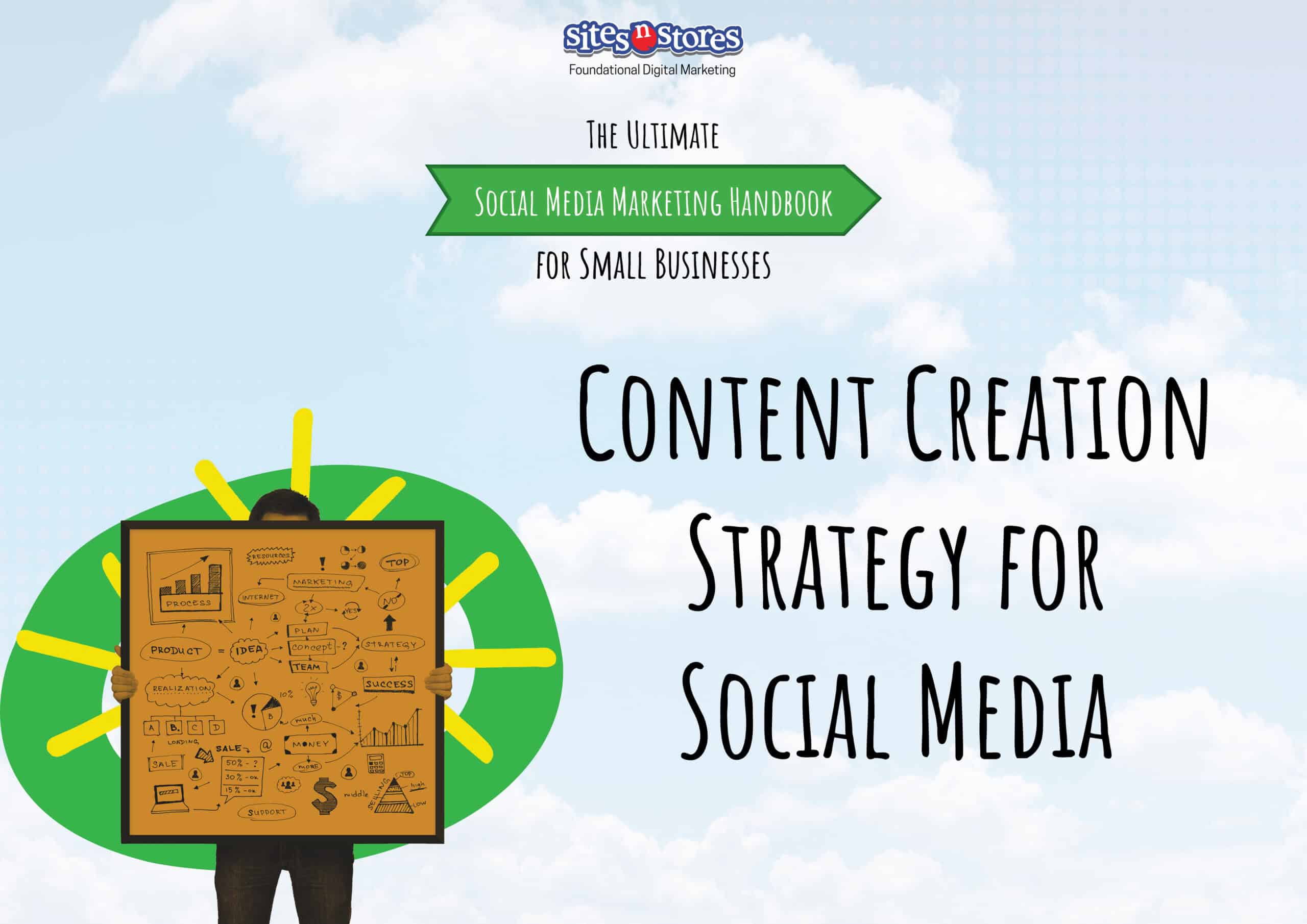
Content Creation Strategy for Social Media
The heart and soul of social media success for small businesses lie in content creation. Content is what engages your audience, tells your brand's story, and ultimately, drives your business goals forward. Get ready to create content that resonates, captivates, and converts!
Here are the integral step for your social media content strategy that you need to complete before crafting any content for social media:
- Identify Your Goals: Before you even start creating content, it's essential to know what you're aiming to achieve. Are you looking to increase brand awareness, drive sales, enhance customer engagement, or establish your brand as a thought leader? Setting clear, measurable goals will guide your content strategy and help you assess its effectiveness.
- Understand Your Audience: Knowing who your audience is, is key to creating content that resonates. Demographics, interests, pain points, and online behaviour are all crucial factors to consider. This understanding allows you to tailor your content to meet their needs, preferences, and challenges, ensuring it strikes a chord every time.
- Content Plan and Calendar Creation: Once you know your goals and understand your audience, the next step is planning your content. A content calendar is vital for organising and scheduling your posts. This ensures a consistent and strategic presence on social media, allowing you to cover a range of topics and formats while also aligning with key dates and events relevant to your audience.
- Content Creation: With your plan in place, it’s time to create compelling content. Focus on quality and diversity, mixing formats like images, videos, infographics, and blogs to keep your audience engaged and entertained. Remember, your content should always add value, whether it's through educating, inspiring, or entertaining your audience.
- Engagement Strategies: Creating content is just one part of the strategy; engaging with your audience is another critical element. Respond to comments, participate in conversations, and encourage user-generated content. This two-way interaction not only builds community but also strengthens your relationship with your audience.
- Analysis and Adaptation: Lastly, regularly review your content's performance using analytics tools available on social media platforms. Look at what works and what doesn’t, then refine your strategy accordingly. This continuous cycle of analysis and adaptation will help optimise your content strategy, ensuring it remains effective and relevant.
Utilising a mix of formats keeps your social media presence dynamic and engaging. Importantly, consistency is key. Posting regularly keeps your audience engaged and helps you stay top of mind.
However, it's not just about quantity; quality matters immensely. High-quality, original content tailored to the preferences of your target audience can elevate your brand and spark meaningful conversations.
By following these steps and consistently producing high-quality content that entertains, informs, and inspires, you'll become a go-to source for your audience. Remember, each piece of content is an opportunity to showcase your expertise, reflect your brand's personality, and differentiate yourself in the bustling online marketplace. With enthusiasm and strategic planning, your content can turn followers into fans and customers into community members. Successful content creation is a mix of art and science – creativity fuelled by strategic planning and insights.
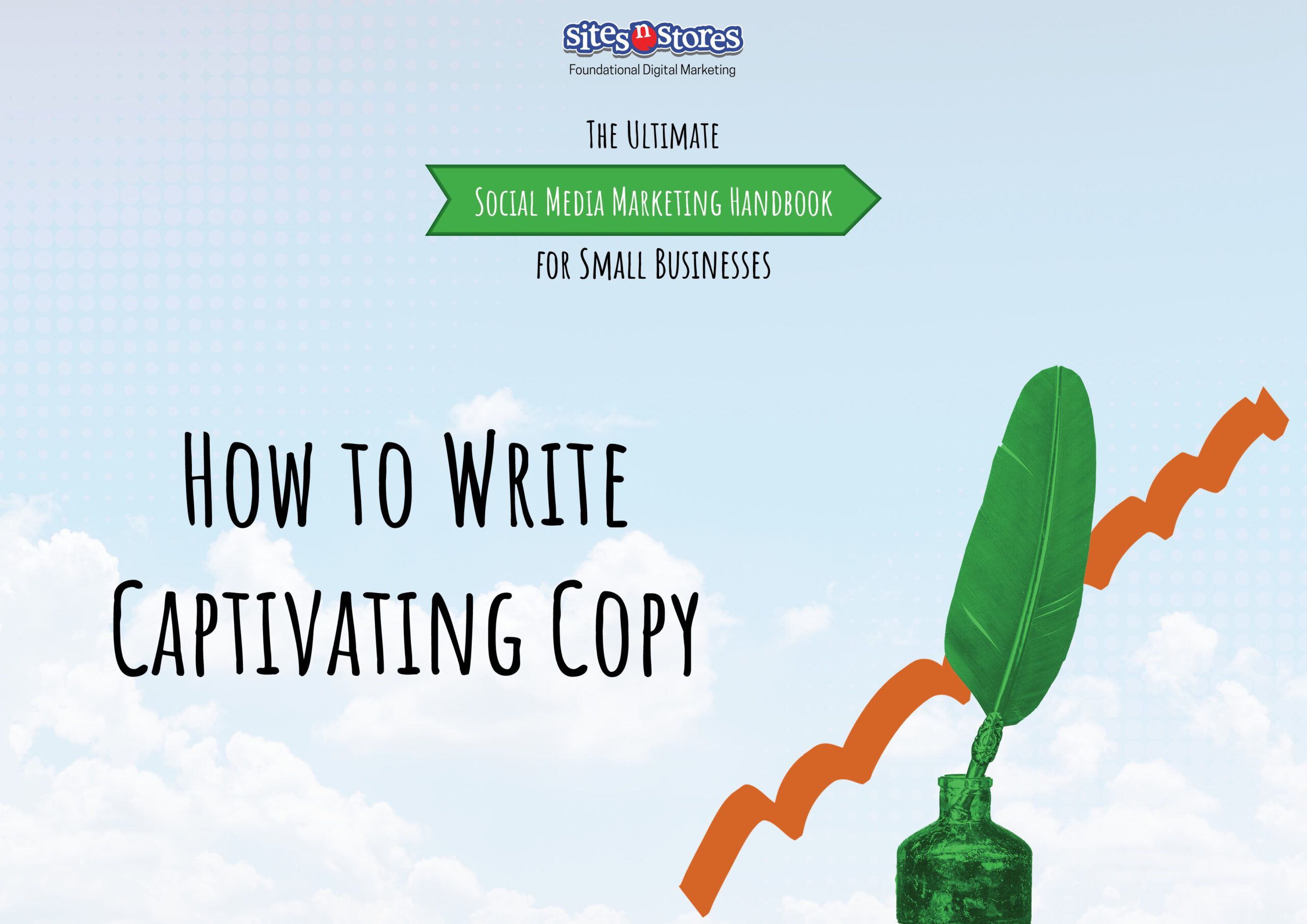
How to Write Captivating Copy
Writing copy for social media posts requires a strategic blend of content and delivery to effectively engage your audience. The choice of words is crucial; they need to capture attention, evoke emotions, and drive action, making every word count in the limited space of a social media caption.
This is especially true for platforms like X (formerly Twitter), Instagram, and Facebook, where the way you craft your message can significantly impact its reach and engagement. Focusing on clarity and relevance ensures that your message is easily understood, while the tone, pace, and style of your writing add personality and make your posts more relatable and memorable.
Adapting your language and presentation to match the preferences and cultural nuances of your audience can dramatically increase the effectiveness of your communication. It involves not just the use of sophisticated language but selecting the right words that resonate with your audience, making your message compelling and persuasive.
Here are the steps you should take when crafting effective copy for social media posts:
- Hook Your Audience Immediately: Your opening line is critical. Use a powerful statement, a thought-provoking question, or an intriguing fact to grab attention. The first few words can make the difference between a scroll-past and a read.
- Use a Conversational Tone: Speak directly to your audience as if you're having a conversation with them. This approach makes your content more personal and engaging. Use "you" to address readers, making them feel included and important.
- Incorporate Storytelling: People love stories - they're engaging, memorable, and shareable. Whether it's a customer success story, a behind-the-scenes look, or the inspiration behind a product, stories can make your brand more relatable and human.
- Include a Clear Call-To-Action (CTA): Every piece of copy should have a purpose, guiding readers on what to do next - be it liking, sharing, commenting, or visiting your website. Make your CTAs clear and compelling to encourage interaction.
- Utilise Hashtags and Keywords Wisely: While primarily relevant on platforms like Instagram and Twitter, the strategic use of hashtags and keywords can extend your reach and connect your post to specific conversations and audiences.
- Prioritise Brevity and Clarity: In a world of dwindling attention spans, get your message across quickly and clearly. Trim the fluff and focus on the essence of what you want to communicate.
- Edit Ruthlessly: Before you hit publish, proofread your copy. Look out for typos, grammatical mistakes, and awkward phrasing. A clean, error-free post reflects professionalism and attention to detail.
- Test and Learn: What works for one brand or audience might not work for another. Experiment with different styles, formats, and voices to see what resonates best with your audience. Use analytics to track engagement and adjust your strategy accordingly.
Mastering the art of social media copywriting means creating content that is not only informative and entertaining but also motivating and inspiring, leveraging the power of words and presentation to make a lasting impact. Whether your goal is to inform, entertain, persuade, or inspire, the success of your social media posts lies in the perfect harmony of what you say and how you say it.
Use our tips above to start writing captivating social media copy, and weave words like a pro to connect with your audience on social media.
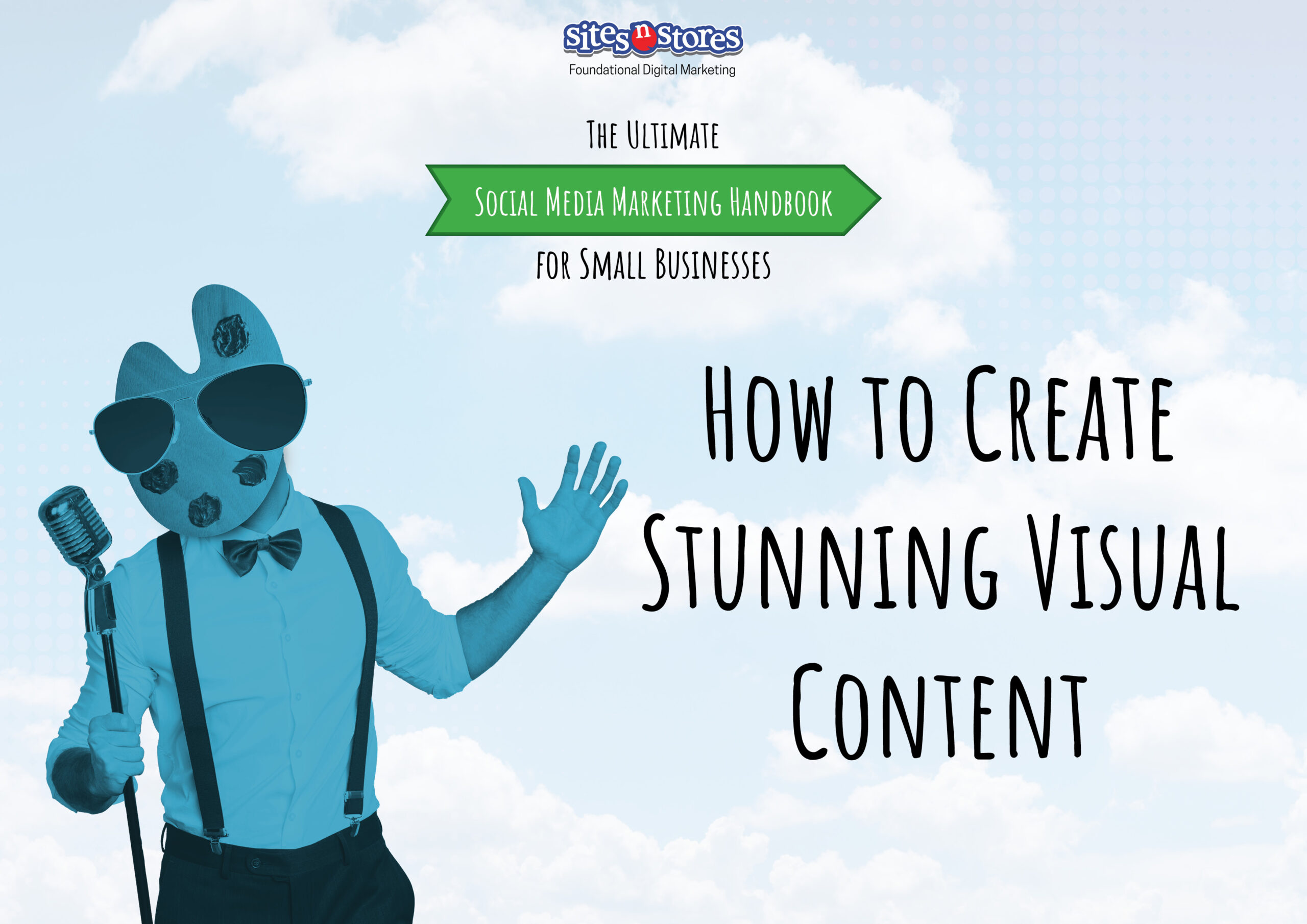
How to Create Stunning Visual Content
Creating impactful visual content goes beyond just choosing the right image or video; it’s about crafting a narrative that resonates with your audience and amplifies your brand's message. Here’s how to make your visual content stand out:
- Tell a Story: Every piece of visual content should tell a part of your brand’s story. Whether it’s a single image or a short video, ensure it conveys a message or evokes an emotion that’s aligned with your brand narrative.
- Quality Matters: High-quality images and videos are more likely to capture attention than low-quality ones. Invest in good photography and video production to make your content professional and appealing.
- Incorporate Design Elements: Use design elements like contrast, balance, and alignment to make your visuals more engaging and easier to digest. Tools like Canva or Adobe Spark make it easier for non-designers to create professional-looking content.
- Optimise for Each Platform: Each social media platform has its own preferred formats and dimensions. Customise your content to fit the specifications of each platform for better engagement.
- Engage with Trends: Leverage current trends and memes to make your content relevant and shareable, but ensure they align with your brand voice and message.
- Use Captions and Hashtags Wisely: While your focus is on visual content, don’t underestimate the power of a good caption and relevant hashtags. They can provide context and extend the reach of your content.
- Monitor Performance: Use analytics tools to track the performance of your visual content. Analyse what works and what doesn’t to refine your strategy over time.
- Experiment and Innovate: Don’t be afraid to try new formats or creative concepts. Innovation keeps your content fresh and can lead to viral hits.
By applying these strategies, you can create visual content that not only stands out but effectively communicates your brand's story and engages your target audience.
From the mighty swing of Instagram’s visual allure to X’s concise posts and the networking powerhouse of LinkedIn, each platform offers distinct advantages. This rundown will help you grasp the nuances so you can tailor your approach accordingly.
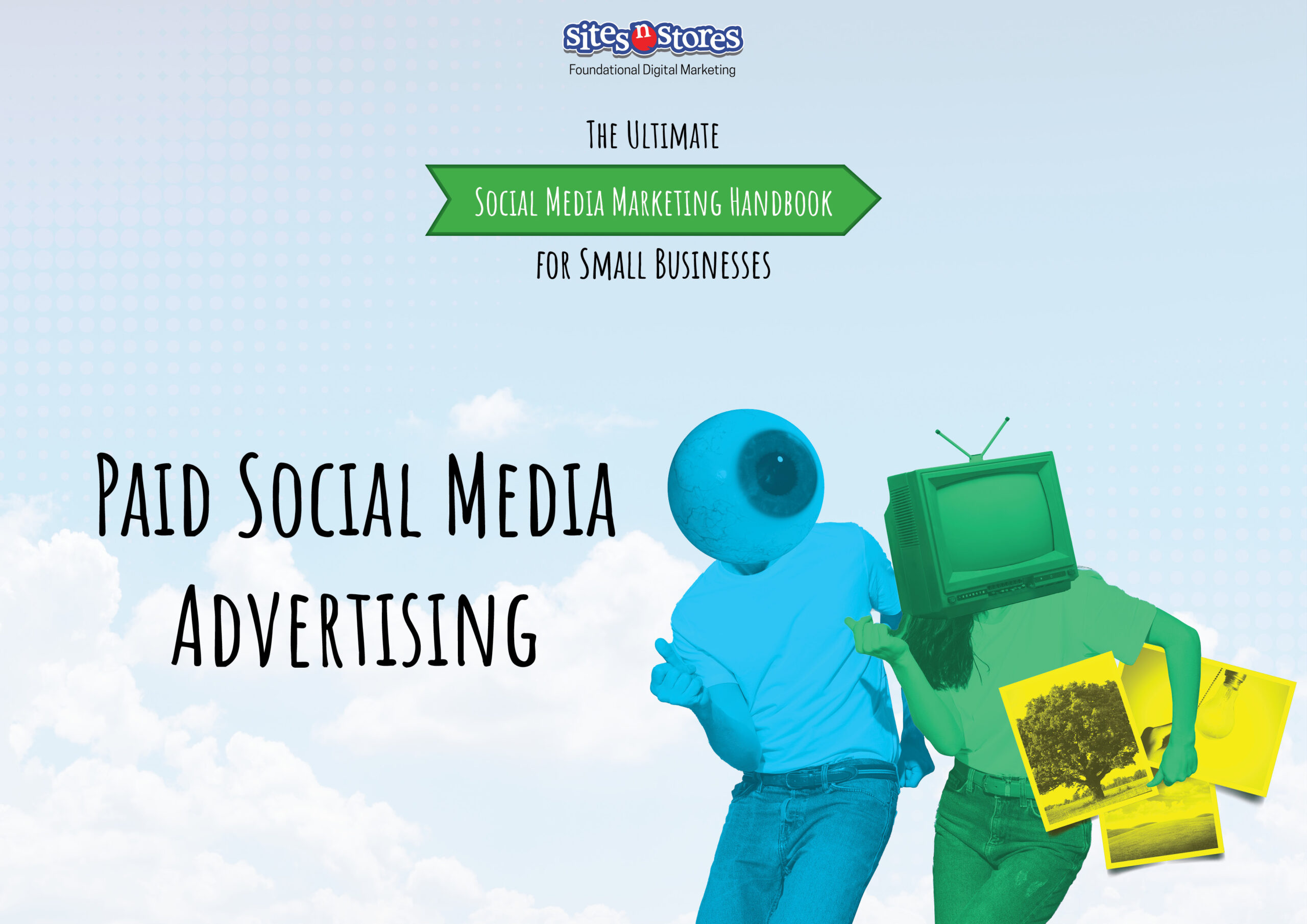
Paid Social Media Advertising
Sometimes, making a modest investment can significantly impact your marketing efforts, especially in the realm of paid social media advertising. But we will say, marketing on social media is no easy feat.
This strategy involves paying social platforms to display your ads or sponsored content to a targeted audience, which can dramatically increase your visibility and reach in a short period. By carefully selecting your target demographics, crafting compelling ad content, and optimising your campaigns based on performance data, you can achieve a high return on investment.
Paid social media advertising allows for precise audience targeting, including interests, location, age, and more, ensuring that your message reaches the most relevant viewers. This approach is particularly effective when you're looking to quickly boost your reach and engage with potential customers or followers.
It may not be in your business's social media marketing plan to use paid advertising, but if it's a choice you'd like to explore further, we'll guide you through the intricacies of how to leverage paid social media advertising for small businesses. From setting up campaigns to understanding budgeting for maximum effect, there are social media campaigns that can boost your business's engagement and connection with potential customers.
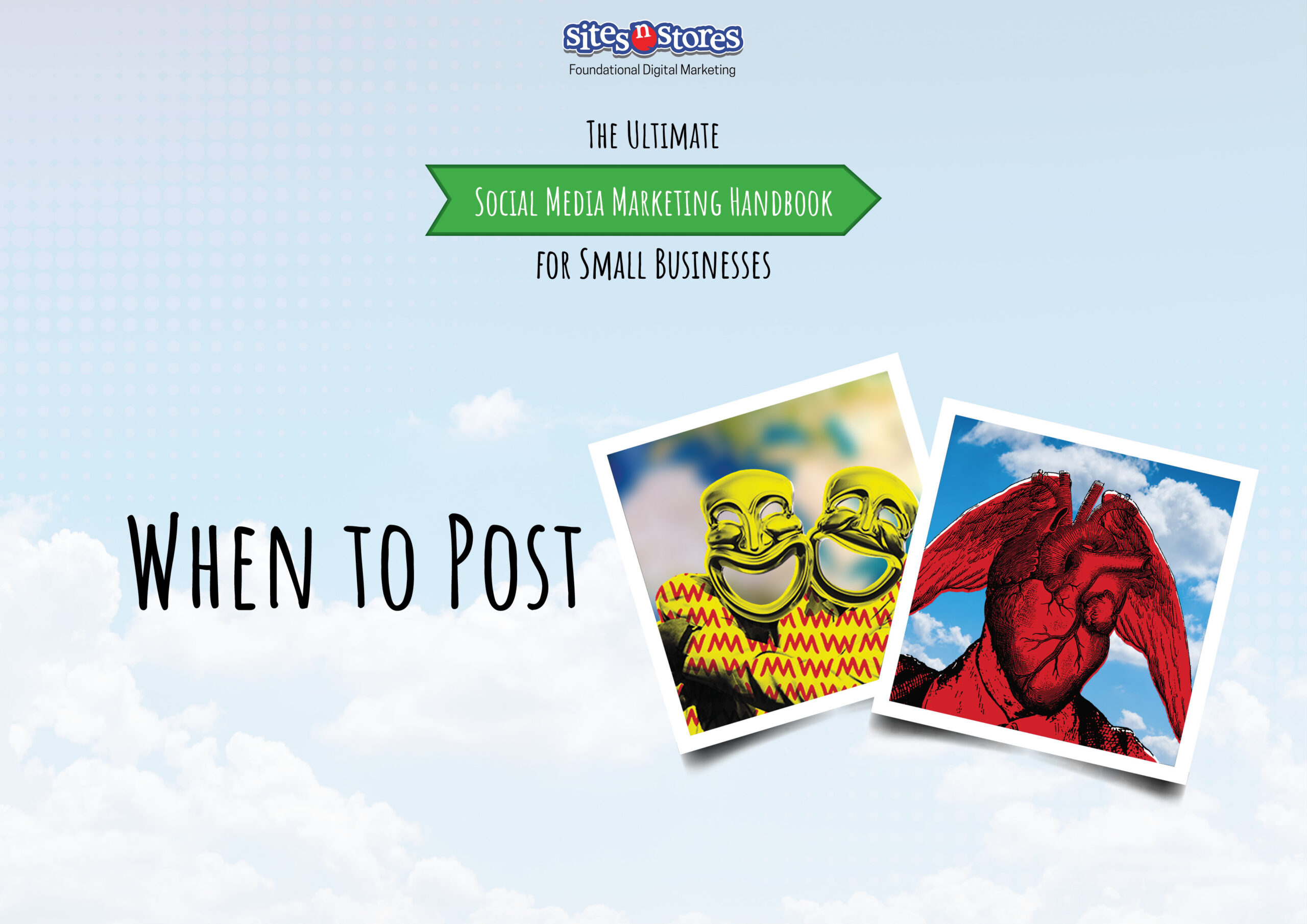
When to Post
Timing really is key in maximising your social media presence! Understanding when your audience is most active online can significantly boost the visibility and engagement of your posts. Here’s a deeper dive into optimising your posting schedule for better results:
- Identify Your Audience's Peak Hours: Use analytics tools available on most social media platforms to track when your followers are online. This data is crucial for tailoring your posting schedule to match their active hours.
- Consistency is Crucial: Establish a regular posting schedule. Consistency helps build a loyal audience, as your followers will know when to expect new content from you. This doesn’t mean you need to post several times a day; finding a frequency that works for you and sticking to it is what matters. You can create a content calendar to keep track of your posts and ensure you're posting at the best times for your target audience.
- Leverage Time Zone Differences: If your audience is global, consider the time zone differences. You might need to post at times that seem unusual to catch everyone at their most active.
- Test and Learn: Don’t shy away from experimenting with different posting times and measuring the engagement. What works for one brand or influencer might not work for you. Use the insights gained from these tests to refine your strategy.
- Utilise Scheduling Tools: Take advantage of scheduling tools like Buffer, Hootsuite, or Later. These tools allow you to plan your content calendar and schedule posts in advance, ensuring you hit the optimal times even if you’re not actively online.
By adopting a consistent and strategic approach to your posting schedule, you’ll not only cut through the noise but also ensure your content stands the best chance of earning the attention it deserves.
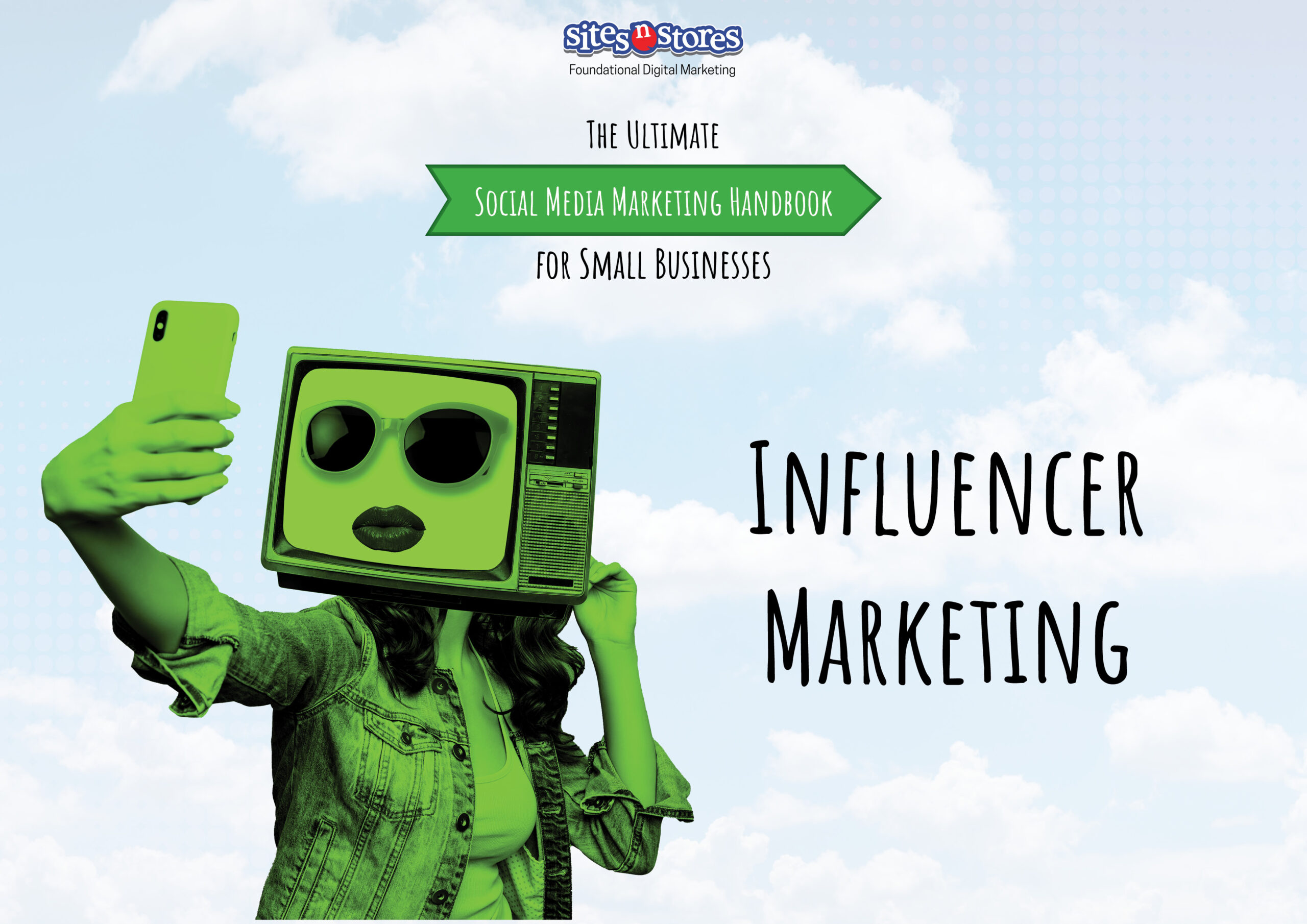
Influencer Marketing
Excited about the potential of influencer marketing to elevate your small business on social media? You're on the right path! Leveraging influencers can propel your brand into the spotlight, build trust with your target audience, and drive meaningful engagement. Here's how you can make it work for you:
- Choose the Right Influencers: It's not always about the number of followers. Look for influencers whose brand values align with yours and who have an engaged audience that matches your target demographic. Micro-influencers can be incredibly effective for small businesses due to their niche audiences and higher engagement rates.
- Build Genuine Partnerships: Approach influencer collaboration as a partnership. Influencers are content creators with a deep understanding of their audience. Collaborate with them to create content that resonates well with both your audiences. This approach ensures authenticity and maximises impact.
- Set Clear Goals and Expectations: Whether it's increasing brand awareness, launching a new product, or driving sales, be clear about what you want to achieve with influencer marketing. Communicate your goals and expectations with your influencer partners to ensure alignment and measure success effectively.
- Leverage Authentic Content: Encourage influencers to share their genuine experiences with your brand. Authentic content resonates more deeply with audiences and can drive better results than overly promotional content. This authenticity builds trust and credibility for your brand.
- Monitor and Measure Results: Use analytics to track the performance of your influencer campaigns. Look at engagement rates, website traffic, and conversion metrics to understand the impact. This data will help you refine your approach and make informed decisions for future campaigns.
Collaborating with influencers can significantly transform the marketing approach for a small business. By partnering with influencers, businesses can tap into their vast and engaged audiences, increasing brand visibility and credibility. Influencers often have a strong connection with their followers, making their endorsements more authentic and impactful. This strategy can lead to higher engagement rates, more traffic to the business's website, and ultimately, increased sales. Moreover, influencers can provide valuable content that can be repurposed across various marketing channels, further maximising the business's reach and impact.
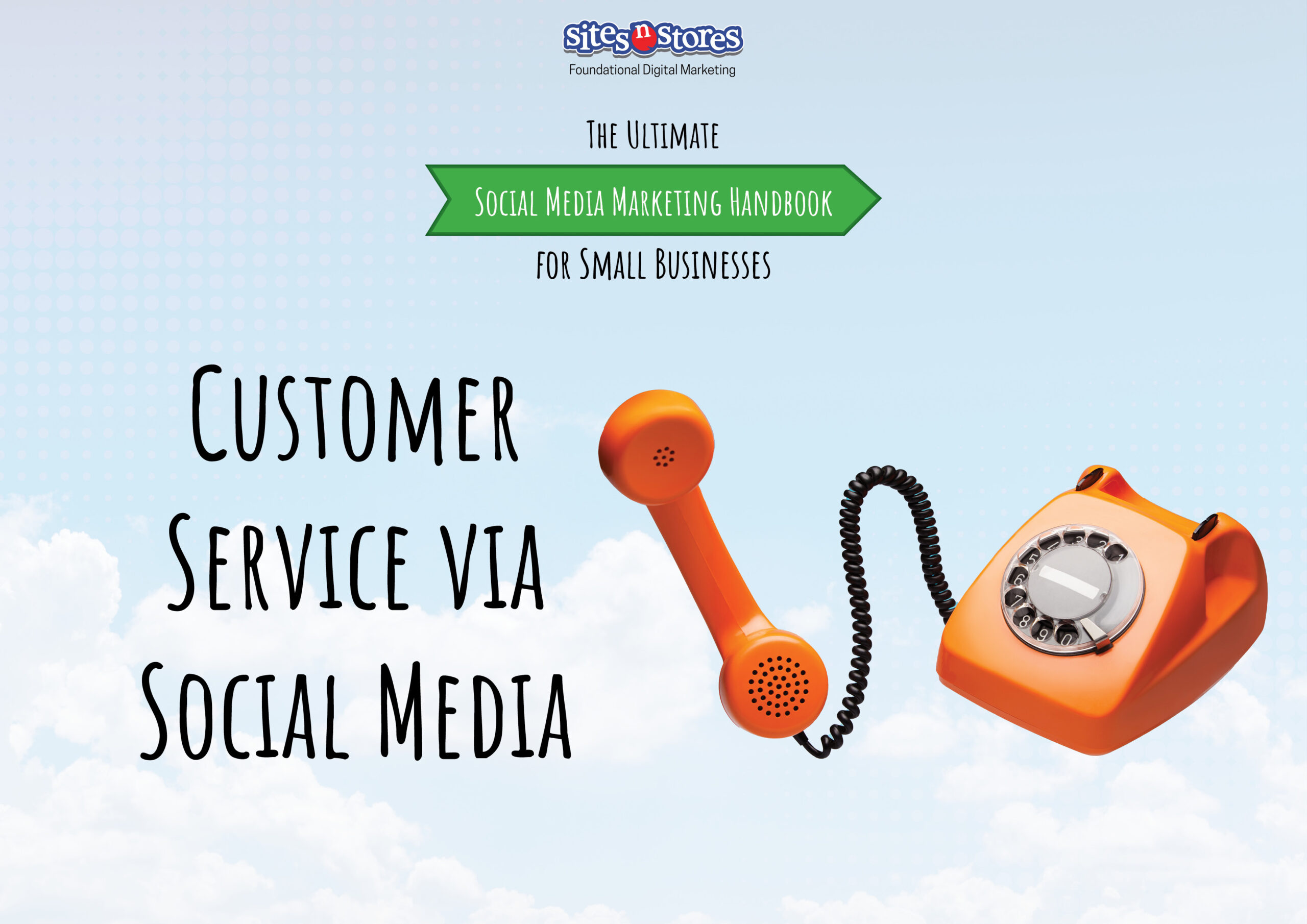
Customer Service via Social Media
More often than not, customers are turning to a simple tweet or Facebook message to start conversations with a brand. Social media has become a powerful tool for businesses, especially small ones, to connect with their customers in real time. By being active on platforms where your customers spend their time, you can offer prompt responses to inquiries, address concerns, and engage in meaningful conversations. This immediate and personal interaction can significantly enhance customer satisfaction and loyalty.
Here's how you can use social media to elevate your customer service and benefit your small business:
- Quick Response Times: Customers expect fast responses, and social media allows you to meet these expectations. By monitoring your social media channels and responding promptly, you demonstrate your commitment to customer service, making your customers feel valued and heard.
- Personalised Interactions: Personalised responses make customers feel special and appreciated. Use their name, reference previous interactions if possible, and tailor your responses to their specific needs or questions. This level of personalisation can transform a generic interaction into a memorable experience.
- Proactive Customer Service: Don’t wait for customers to reach out with a problem. Use social media to proactively seek feedback, ask for suggestions, and check in with customers about their experiences with your product or service. This proactive approach can help you identify and resolve issues before they escalate, enhancing overall customer satisfaction.
- Showcasing Positive Feedback: When customers share positive experiences or feedback on social media, it’s a golden opportunity to amplify this content. Share these positive stories, thank your customers publicly, and let their testimonials serve as social proof of your commitment to customer satisfaction.
- Building a Community: Social media allows you to go beyond individual interactions and build a community around your brand. Engage your audience with interesting content, encourage discussions, and foster a sense of belonging. A strong community can lead to increased customer loyalty, with members advocating for your brand and recommending your products or services to others.
- Learning and Improvement: Feedback from social media can provide valuable insights into customer preferences and pain points. Use this feedback to make improvements to your products, services, or customer service processes. Being transparent about the changes you’re making based on customer feedback can further enhance trust and loyalty.
By using the power of social media for customer service, small businesses can create strong, lasting relationships with their customers, turning them into advocates for the brand. This not only improves customer satisfaction and loyalty but also drives word-of-mouth marketing, which is invaluable for small businesses looking to grow and succeed in today’s competitive market.

Metrics Analysis
To harness the full potential of your social media strategy, it's critical to track the right metrics. These analytics will guide you in making data-driven decisions, optimising your campaigns, and engaging with your audience more effectively. Here’s a step-by-step guide on which data to monitor to supercharge your social media efforts:
- Engagement Rate: This includes likes, shares, comments, and clicks. High engagement rates are indicative of content that resonates with your audience. By understanding what types of posts generate the most interaction, you can tailor your content strategy to replicate this success.
- Reach and Impressions: Reach measures how many unique users see your content, while impressions track how often your content is displayed. Monitoring these metrics can help you understand the breadth and frequency of your content's visibility, guiding you in adjusting your posting schedule or content formats for optimal visibility.
- Follower Growth: Tracking follower growth gives insights into the effectiveness of your brand awareness campaigns. A steady increase in followers suggests that your content is appealing and relevant to your target audience.
- Click-Through Rate (CTR): The CTR indicates how often people who see your ad or post click on it. This metric is crucial for evaluating the effectiveness of your calls-to-action (CTAs) and can guide you in refining your messaging for better results.
- Conversion Rate: This measures how many of the clicks on your content result in a desired action, such as signing up for a newsletter or making a purchase. Conversion rate optimization (CRO) involves tweaking your landing pages, CTAs, and content to improve this metric, directly impacting your ROI.
- Customer Sentiment Analysis: Understanding public sentiment towards your brand on social media can provide valuable insights into brand perception. Positive sentiment can be leveraged in marketing materials, whereas negative sentiment might highlight areas for improvement or customer service opportunities.
- Content Performance: Identify which types of content (e.g., videos, photos, blog posts) perform best on each platform. This analysis can help you allocate resources efficiently, focusing on the content types that your audience prefers.
- Competitor Benchmarking: Keep an eye on your competitors’ social media performance. Understanding their engagement rates, content strategy, and follower growth can provide strategic insights and help identify opportunities to differentiate your brand.
By consistently monitoring these key social media analytics, you can gain a comprehensive understanding of your audience's preferences, the strengths and weaknesses of your strategy, and areas for optimisation. The goal is to use these insights to refine your approach, making your social media channels more engaging and effective in achieving your business objectives. Vow to make data-driven decisions, and watch as your social media presence blooms, engaging and expanding your audience like never before!
Harnessing the power of social media marketing is not just advantageous for small businesses—it's essential in today's online world. By implementing the strategies outlined in this guide, from how to craft the perfect content to proactive customer service, and rigorously analysing the metrics that matter, your small business can significantly enhance its online presence through refined social media marketing strategy.
By staying authentic, responsive, and innovative in your approach, you can transform these online interactions into lasting customer relationships and, ultimately, drive growth and success for your business. Whether you're just starting out or looking to refine your existing strategies, the path to social media mastery is within reach! You can also contact us for any assistance you may need in social media for your business, we are the experts after all! Unsure which platform is best for your business? Curious about organic social media but don't have the time to write posts yourself? We can help with it all. Get in touch today.
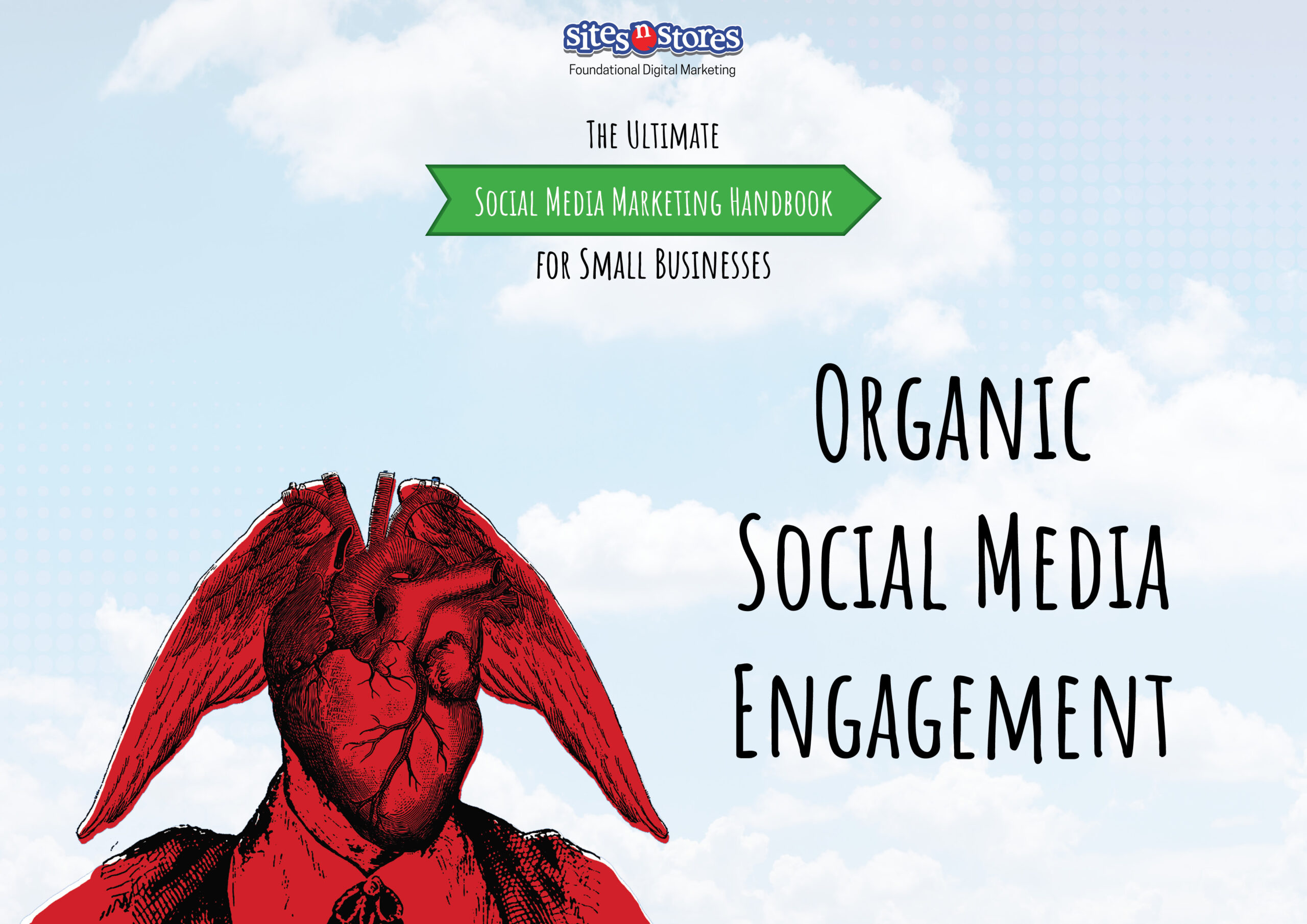
Organic Social Media Engagement
Growing an online community organically is about valuing relationships over transactions. That's right, you can still use it as a social media marketing strategy without paying the big bucks that paid social media marketing requires.
Organic social media involves creating and sharing content that truly speaks to the interests and needs of your audience, making them feel valued and understood. Here’s how it works:
- Content Creation: Focus on quality content that addresses your audience's concerns, interests, and needs. This could range from informative blog posts, engaging videos, helpful guides, to entertaining stories. The key is to ensure your content is authentic and adds real value to your audience's lives.
- Engagement: Interaction is crucial. Respond to comments, messages, and feedback. Ask questions to encourage dialogue and show that you value their opinions and insights. This two-way communication fosters a sense of belonging and community among your followers.
- Listening: Pay close attention to what your community is saying. Use social listening tools to understand the conversations happening around your brand or niche. This will help you to tailor your content and interactions more effectively, ensuring you remain relevant and engaging to your audience.
- Consistency: Consistency in posting and interaction helps keep your audience engaged and informed. It also helps in building trust and establishing your brand as a reliable source of information or entertainment.
- Collaboration: Collaborate with other creators or brands that share your values and have a similar audience. This can help to introduce your community to new content and perspectives, enriching their experience.
By focusing on these elements, you can grow your online community organically. This growth is sustainable and valuable because it's built on genuine connections and mutual respect, making your social media presence powerful and meaningful. Remember, it's not just about the numbers; it's about the quality of the connections and the community you are building.



